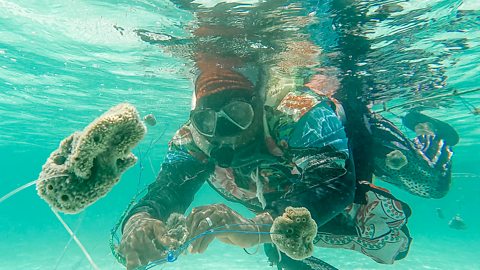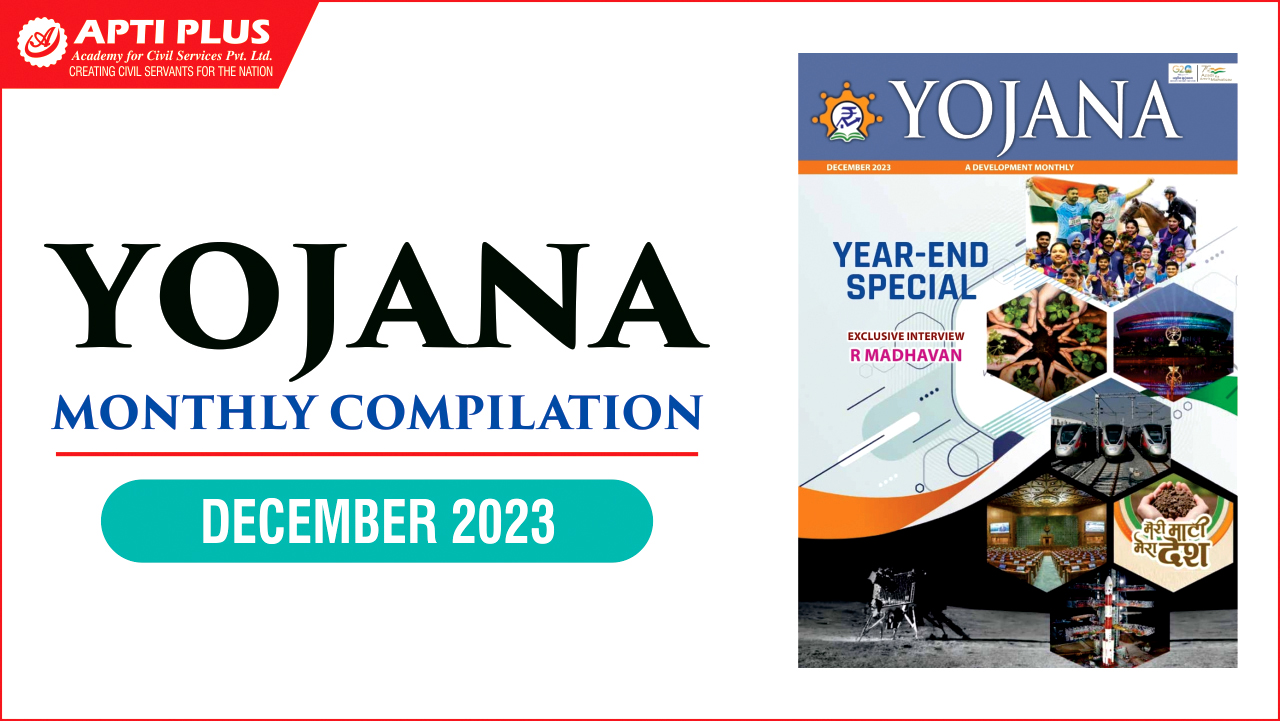Description

Disclaimer: Copyright infringement not intended.
Context
- As oceans warm up, women in Zanzibar switch from seaweed to climate-resilient sponge farming to stay afloat.
Sponge Farming
- Sponge farming, or sponge mariculture, is an innovative practice involving the cultivation of marine sponges for commercial purposes. This sustainable approach addresses the demand for natural sponges while minimizing the environmental impact associated with traditional harvesting methods. The cultivation of sponges contributes to economic development, biodiversity conservation, and the sustainable use of marine resources.

Key Aspects of Sponge Farming:
Species Cultivated:
- Various sponge species are cultivated in sponge farming practices, including commercially valuable varieties like the Mediterranean bath sponge (Spongia officinalis) and the Caribbean reef sponge (Euplectella aspergillum). Understanding the biology and ecology of these species is crucial for successful cultivation.
Cultivation Methods:
- Sponge farming employs different cultivation methods, ranging from attaching sponge fragments to artificial substrates to using natural sea-bottom substrates. The substrates are often suspended above the sea floor to avoid sedimentation issues. The process may involve collecting sponge fragments or larvae and facilitating their growth under controlled conditions.
Environmental Conditions:
- Success in sponge farming depends on maintaining specific environmental conditions. Factors such as water temperature, salinity, nutrient levels, light availability, and water quality play pivotal roles in sponge growth. The cultivation sites are carefully chosen to ensure optimal conditions.
Harvesting and Pruning:
- Harvesting involves carefully cutting mature sponges from the substrate, leaving the base intact for regrowth. Pruning or cutting back the sponges is a common practice to stimulate branching and enhance the production of high-quality, marketable sponges. Sustainable harvesting practices are emphasized to avoid depletion of sponge populations.
Applications of Cultivated Sponges:
- Cultivated sponges find applications in various industries. They are valued for their natural absorbency, exfoliating properties, and use in cosmetics, pharmaceuticals, and personal care products. Understanding the unique characteristics of different sponge varieties is essential for targeted applications.
Sustainability and Conservation:
- Sponge farming represents a sustainable alternative to traditional sponge harvesting, which often leads to overexploitation of natural sponge populations. By cultivating sponges, it becomes possible to meet market demand while conserving wild sponge populations and preserving marine ecosystems.
Challenges and Research:
- Sponge farming faces challenges related to disease management, environmental variability, and the need for continuous monitoring. Ongoing research focuses on improving cultivation techniques, enhancing disease resistance, and developing new varieties. Innovation in sponge farming contributes to the industry's sustainability.
Global Significance:
- Sponge farming is practiced globally in regions such as the Mediterranean, the Caribbean, and the Asia-Pacific. The industry's global significance lies in its potential to meet market demands sustainably, supporting economic growth in various regions.

Conclusion:
- Sponge farming, as a sustainable aquaculture practice, holds promise for meeting the demand for natural sponges while ensuring the conservation of marine ecosystems. Its economic and environmental significance makes it a noteworthy subject for consideration in discussions on marine resource management and sustainable.
|
PRACTICE QUESTION
Question:
Which of the following statements is correct regarding sponge farming, a sustainable aquaculture practice?
1.Sponge farming involves the cultivation of marine sponges exclusively for research purposes.
2.The Mediterranean bath sponge (Spongia officinalis) and the Caribbean reef sponge (Euplectella aspergillum) are commonly cultivated species in sponge farming.
3.Sponge farming is primarily conducted by allowing sponges to grow naturally on the sea floor without any human intervention.
4.Sustainable harvesting practices in sponge farming involve removing the entire sponge, including its base, during the harvesting process.
Answer: 2. The Mediterranean bath sponge (Spongia officinalis) and the Caribbean reef sponge (Euplectella aspergillum) are commonly cultivated species in sponge farming.
Explanation:
Option 2 is the correct answer.
- Sponge farming, or sponge mariculture, involves the cultivation of marine sponges for commercial purposes. The question correctly states that the Mediterranean bath sponge (Spongia officinalis) and the Caribbean reef sponge (Euplectella aspergillum) are commonly cultivated species in sponge farming.
- Options 1, 3, and 4 contain inaccuracies:
- Option 1 is incorrect because sponge farming is primarily conducted for commercial purposes, meeting the demand for natural sponges in various industries, rather than exclusively for research purposes.
- Option 3 is incorrect as sponge farming typically involves controlled cultivation methods, such as attaching sponge fragments to artificial or natural substrates, rather than allowing sponges to grow naturally on the sea floor without human intervention.
- Option 4 is incorrect because sustainable harvesting practices in sponge farming involve carefully cutting mature sponges from the substrate while leaving the base intact for regrowth, rather than removing the entire sponge, including its base.
Therefore, option 2 accurately reflects the commonly cultivated species in sponge farming and is the correct answer.
|









